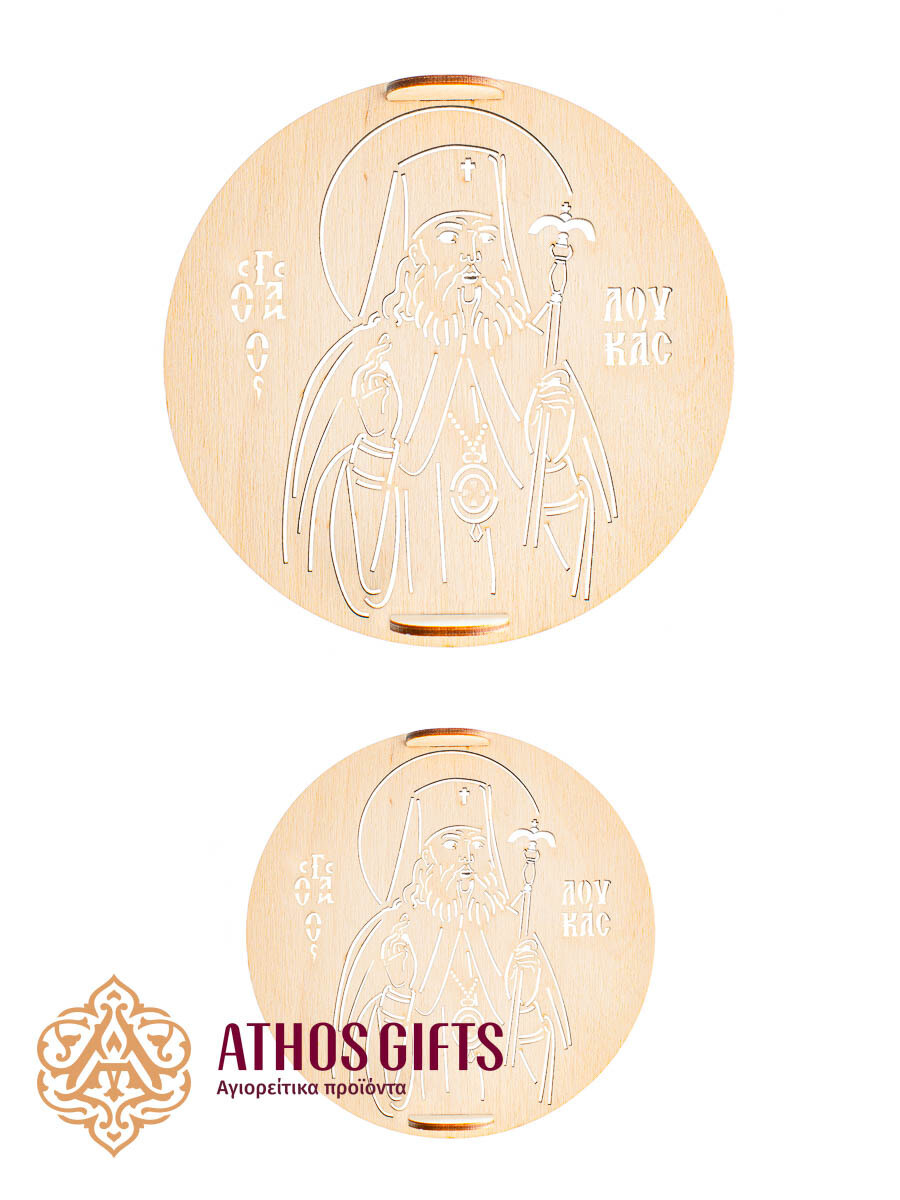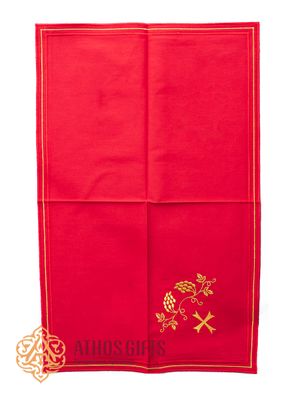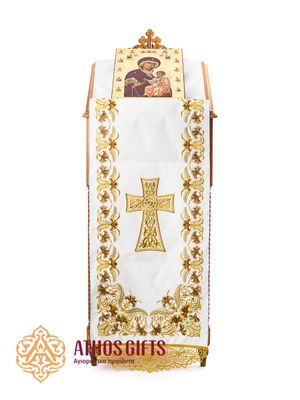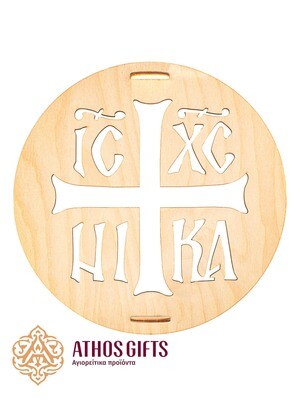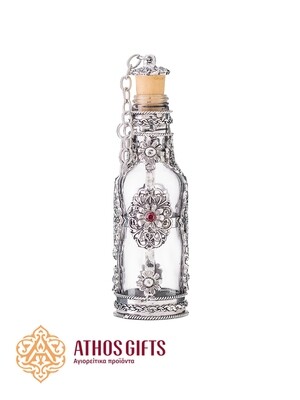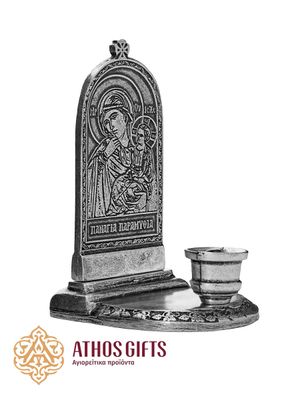Seal for Koliva Saint Luke
Koliva
Koliva (kollyva, kollyba, or kolyvo) is a dish made of whole-grain wheat. Sometimes barley, millet, or rice are used instead. Another ingredients of the koliva are sugar or honey, as well as nuts, dried fruits, breadcrumbs, sesame seeds and pomegranate. The top of the koliva is sometimes decorated with white or silver colored candies.
Each ingredient of koliva has its own symbolic meaning. Wheat grains symbolize a person who, much like a grain, is a child of the earth. We lie down in the earth in order to rise again to eternal life by Lord's mercy. Honey and sugar symbolize the sweetness of Heaven. Raisins represent Jesus Christ, who is the True Vine. The pomegranate symbolizes the splendor and grace of Heaven. Nuts are life, which prolongs itself. Finally, white candy symbolizes bones, which, unlike corruptible flesh, remain unchanged.
How to use
Cover the surface of the koliva with powdered sugar. Then place a seal on top, in the center of the dish. Sprinkle cinnamon in order to capture the pattern of the seal. Finally, remove the seal as carefully as possible, in order to not disturb the pattern.
Saint Luke
Saint Luke (Valentin Felixovich Voyno-Yasenetsky) was a famous Russian surgeon, a spiritual writer, a bishop of the Russian Orthodox Church, and archbishop of Simferopol and the Crimea from May 1946.
He was born on April 15, 1877 in Kerch, in an impoverished noble family. In 1889, they moved to Kiev. The father was a devout Catholic but did not impose his views on the family. The Orthodox traditions were brought to the children by their mother, who was also actively engaged in charity.
After graduating from gymnasium, Valentin chose between art and medicine, ultimately opting for the latter as it seemed more beneficial to society. He was deeply interested in the problems of ordinary people and aimed to become a rural doctor.
In 1904, Valentin Voyno-Yasnetsky married Anna Vasilyevna Lanska, a deeply religious Sister of Mercy. Their marriage lasted until 1919 when Anna Vasilyevna died of tuberculosis.
The death of his wife only strengthened Valentin's religious views. He regularly attended church services, was an active parishioner, and gave lectures on the interpretation of the Holy Scriptures. When offered to take holy orders, he readily accepted. He was consecrated as an archbishop in 1942.
As a prominent religious figure, Luke was repeatedly subjected to political repression. In total, he spent 11 years in exile.
Archbishop Luke died on June 11, 1961. In 1995, he was canonized, and in 1996, his holy relics were found, which are now kept in the Holy Trinity Cathedral in Simferopol.
In Greece, St. Luke is revered almost as much as in Russia: more than thirty chapels are dedicated to him, and a local surgical society bears his name. In Greek iconography, St. Luke is often depicted with a set of surgical instruments lying beside him.
